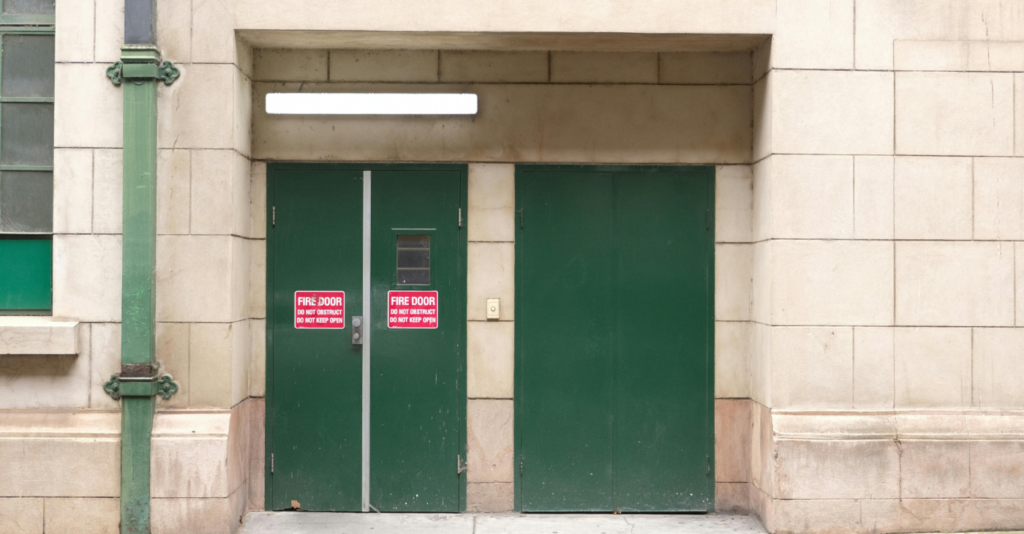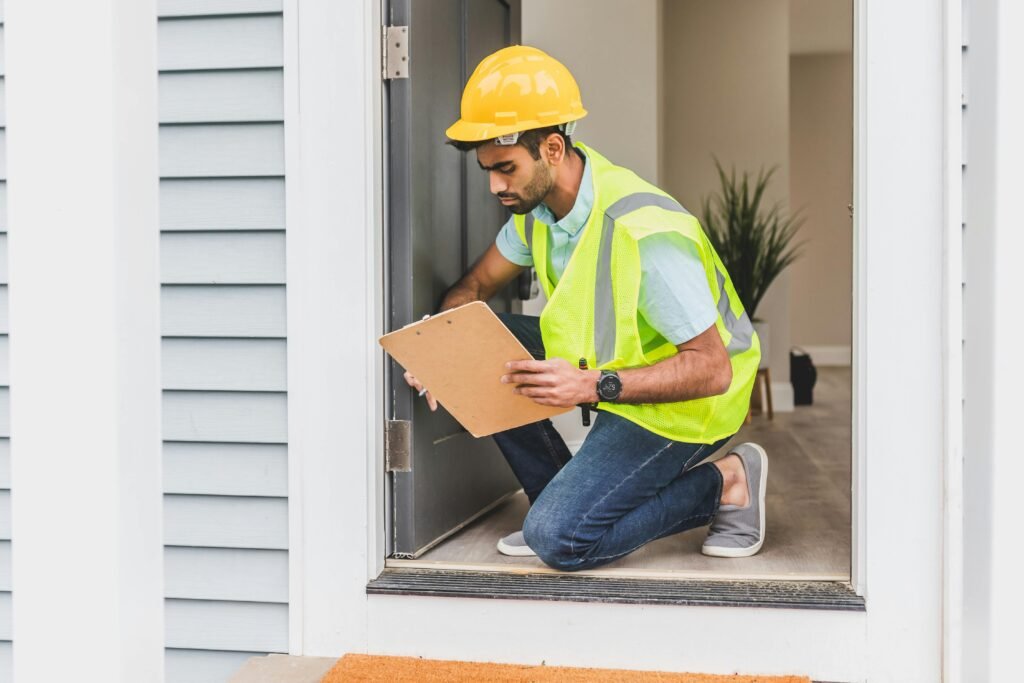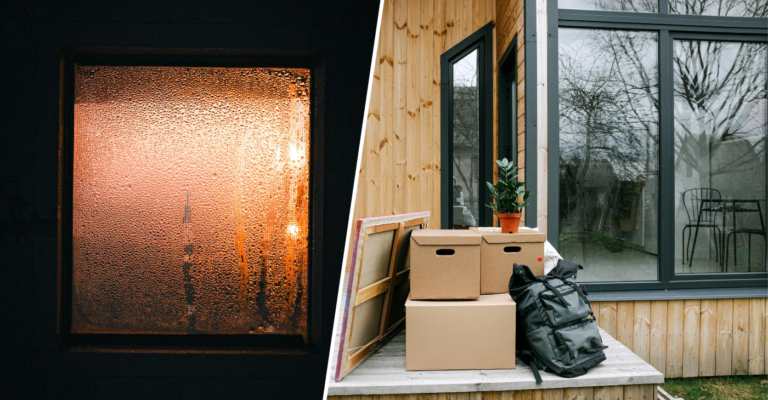The ultimate guide to fire door inspections
Fire door inspections are a crucial aspect of maintaining safety in any building, ensuring that these life-saving barriers function effectively in the event of a fire. A well-maintained fire door can prevent the spread of fire and smoke, providing occupants with the necessary time to evacuate safely. Regular inspections, conducted by certified professionals, are not just a legal requirement but a vital step in safeguarding lives and property.
Understanding the importance of fire door inspections involves more than just compliance with regulations. It’s about ensuring that each door in your building can perform its intended function when it matters most. This article will guide you through the essential aspects of fire door inspections, from the legal obligations to the critical components that must be checked, ensuring that your fire doors are always ready to protect.
The legal framework
Fire door inspections are not merely a best practice but a legal requirement in many jurisdictions. Regulatory bodies such as the National Fire Protection Association (NFPA) and the Regulatory Reform (Fire Safety) Order 2005 in the UK mandate regular inspections of fire doors. These regulations are designed to ensure that fire doors meet specific standards and can perform their critical function in the event of a fire. Non-compliance with these regulations can lead to severe penalties, including fines and legal action. More importantly, neglecting fire door inspections can result in catastrophic consequences, such as loss of life and property.
Fire doors are integral to a building’s passive fire protection system. They are designed to contain fire and smoke, providing a safe route for occupants to evacuate and allowing emergency services to control the fire more effectively. Regular inspections ensure that fire doors are in good working condition and can fulfill this vital role. Compliance with fire door inspection regulations is not just about avoiding legal repercussions; it’s about upholding safety standards that protect everyone in the building.
Common issues found during fire door inspections
Fire door inspections often reveal a range of common issues that, if left unaddressed, can compromise the door’s ability to contain fire and smoke. Some of the most frequently encountered problems include:
- Misalignment: A fire door that is not properly aligned with its frame may not close correctly, leaving gaps that can allow fire and smoke to escape.
- Damaged seals: Intumescent and smoke seals can become damaged or worn over time, reducing their effectiveness in preventing the spread of fire and smoke.
- Faulty self-closing mechanisms: A self-closing mechanism that fails to close the door fully can render the fire door ineffective in an emergency.
- Unapproved modifications: Fire doors that have been altered or modified without proper approval or adherence to fire safety standards can no longer be relied upon to perform their intended function.
- Obstructions: Fire doors that are blocked or wedged open cannot close automatically, which is a common and dangerous violation often found during inspections.

The role of certified inspectors in fire door maintenance
Certified inspectors are essential in maintaining the safety and functionality of fire doors. Their expertise ensures that every component is thoroughly inspected and compliant with fire safety regulations, preventing potential hazards. Read more
-
Identifying potential issues
Certified inspectors are specifically trained to detect issues that may not be visible to untrained personnel. This includes subtle problems like slight misalignments, wear on seals, or hardware fatigue. Their ability to identify these potential issues early is key to preventing minor defects from escalating into major safety risks.
-
Systematic inspections
The inspection process carried out by certified inspectors is both detailed and methodical. They assess every component of the fire door, including the door leaf, frame, hinges, seals, glazing, and self-closing mechanisms. This comprehensive approach ensures that all aspects of the fire door are thoroughly checked, leaving no room for oversight. By systematically working through each component, inspectors can ensure that the door will function correctly in the event of a fire.
-
Ensuring compliance
Certified inspectors are well-versed in the latest fire safety regulations and standards, which can often be complex and regularly updated. Their knowledge ensures that all fire door inspections are conducted in full compliance with these legal requirements. This not only protects the safety of the building’s occupants but also shields the building owner from potential legal and financial penalties associated with non-compliance. Compliance is a critical aspect of fire safety management, and certified inspectors play a key role in maintaining it.
-
Providing recommendations
In addition to identifying issues, certified inspectors offer expert recommendations on necessary repairs, replacements, or upgrades. For example, they might suggest replacing worn-out seals, upgrading hardware to meet current standards, or making adjustments to improve the door’s fit within its frame. These recommendations are based on their in-depth knowledge of fire door systems and current best practices, ensuring that the fire doors are always at peak performance.
-
Training maintenance staff
Certified inspectors also contribute to the ongoing safety of fire doors by training building maintenance staff. They provide guidance on the importance of fire door maintenance and teach staff how to perform basic checks, such as ensuring that doors close fully and seals remain intact. This training empowers maintenance personnel to keep an eye on fire doors between formal inspections, addressing minor issues before they become significant problems. The collaboration between certified inspectors and maintenance staff ensures that fire door safety is continuously monitored and upheld.
How often should fire doors be inspected?
The frequency of fire door inspections depends on several factors, including the type of building, its occupancy, and the local regulations. However, as a general guideline, fire doors should be inspected at least once every 6 months. In high-traffic areas or buildings with vulnerable occupants, such as hospitals or schools, more frequent inspections may be necessary.
Routine checks by building maintenance staff can also help identify issues between formal inspections. These checks should include verifying that the door closes correctly, the seals are intact, and there are no visible signs of damage or tampering. Regular inspections and maintenance are key to ensuring that fire doors remain functional and compliant with safety standards.

The inspection process
A typical fire door inspection involves a detailed assessment of each door’s condition and its components. The process usually includes the following steps:
- Visual inspection: The inspector will visually assess the door, frame, seals, and hardware for any signs of damage, wear, or tampering.
- Operational check: The door’s operation will be tested to ensure it closes fully and latches securely. The self-closing mechanism will also be tested.
- Component inspection: Each component, including hinges, seals, glazing, and the frame, will be checked for compliance with fire safety standards.
- Documentation: Any issues identified during the inspection will be documented, including recommendations for repairs or replacements. The findings will be recorded in an inspection report, which is essential for demonstrating compliance with regulations.
Documenting and reporting
Proper documentation and reporting are critical components of fire door inspections. After each inspection, a detailed report should be prepared, outlining the condition of each fire door, any issues identified, and the actions taken to address those issues. This report serves as an official record of the inspection and is essential for demonstrating compliance with fire safety regulations.
In addition to keeping records of inspections, building owners and managers should maintain a log of any repairs, replacements, or maintenance performed on fire doors. This log should include the date of the work, the nature of the work performed, and the name of the person or company that performed the work.
Maintaining accurate and up-to-date records is essential for ensuring that fire doors remain compliant with safety regulations and are ready to perform their intended function in an emergency.
Best practices for fire door maintenance between inspections
Regular maintenance is crucial for ensuring that fire doors remain in good working condition between inspections. Building maintenance staff should be trained to perform basic checks, such as ensuring that the door closes fully and that the seals are intact. Any issues identified during these checks should be reported and addressed promptly.
In addition to routine checks, it is important to avoid making any unauthorized modifications to fire doors, such as drilling holes or installing non-compliant hardware. Any alterations to a fire door should be approved by a certified inspector and carried out by qualified professionals to ensure that the door remains compliant with fire safety standards.
The consequences of failing fire door inspections
Failing to conduct regular fire door inspections can have serious consequences. Not only can it result in legal penalties and fines, but it also puts the safety of building occupants at risk. In the event of a fire, a non-compliant fire door may fail to contain the fire and smoke, leading to a faster spread of the fire and increasing the risk of injury or death.
In addition to the potential loss of life, failing to maintain fire doors can result in significant property damage and increased liability for building owners and managers. Insurance claims may be denied if it is found that the fire doors were not properly maintained or inspected, leading to substantial financial losses.
Future trends in fire door technology and inspection
The field of fire door technology and inspection is continually evolving, with new advancements aimed at improving safety and efficiency. One emerging trend is the use of smart technology in fire doors, such as sensors that can monitor the door’s condition in real-time and alert building managers to any issues. These smart fire doors can provide valuable data on door usage, wear, and potential maintenance needs, helping to ensure that fire doors remain in optimal condition.
Another trend is the development of more advanced inspection tools and software that can streamline the inspection process and provide more accurate assessments of fire door condition. These tools can help inspectors identify issues more quickly and provide more detailed reports, improving the overall quality of fire door inspections.
Summary – Fire door inspection best practices
Fire door inspections are an essential component of a building’s overall fire safety strategy. Ensuring that fire doors are regularly inspected, maintained, and compliant with safety regulations is not just about fulfilling legal obligations; it’s about protecting lives and property. Each component of a fire door plays a critical role in its ability to contain fire and smoke, and any defects or issues can compromise its effectiveness in an emergency.
By following a systematic approach to inspections, involving certified professionals, and maintaining accurate documentation, building owners and managers can ensure that their fire doors are always ready to perform their vital function. The cost of neglecting fire door maintenance is far too high, both in terms of human life and financial liability. Embracing best practices and staying informed about the latest trends in fire door technology and inspection can further enhance the safety and security of any building.







